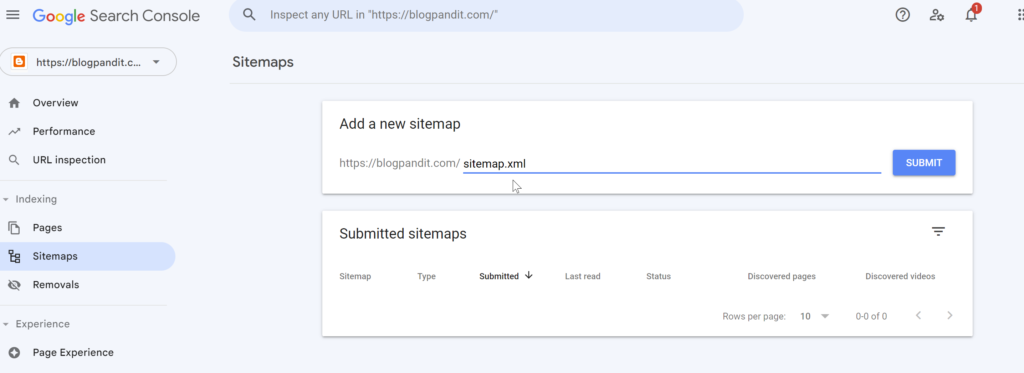In the vast landscape of the internet, search engines play a pivotal role in connecting users with the information they seek. Google, being the most popular search engine, offers a range of tools and features to help website owners optimize their online presence. One such tool is Google Site Map submission, which allows you to provide Google with valuable information about your website’s structure and content. In this comprehensive guide, we will explore the significance of Google Site Map submission, its benefits, and how you can harness its power to enhance your website’s visibility and rankings.

Table of Contents
What are Google Site Maps
A Google Site Map, also known as an XML sitemap, is a file that provides Google with a roadmap of your website. It contains a list of all the pages on your site, their relationship to each other, and other important metadata. By submitting this sitemap to Google, you enable the search engine to discover and understand your website’s structure more effectively.
Benefits of Google Site Map Submission
Submitting your site map to Google offers numerous benefits, including:
- Improved Crawlability: By providing Google with a comprehensive site map, you make it easier for their crawlers to navigate and index your website. This results in better crawlability and ensures that all your web pages are included in the search engine’s index.
- Faster Indexing: When you submit your site map, Google’s crawlers can quickly identify new pages or changes on your website. This expedites the indexing process, allowing your fresh content to appear in search results sooner.
- Enhanced Visibility and Rankings: A well-structured site map helps search engines understand the relevance and importance of your web pages. By ensuring that all your pages are indexed, you increase your chances of higher rankings and improved visibility in search results.
- Clearer Content Prioritization: Through your site map, you can specify the priority of your web pages, indicating which ones are more important. This helps search engines understand the hierarchy and significance of your content, potentially boosting their visibility in search results.
5 Steps for Google Site Map Submission
Now that we understand the benefits, let’s dive into the process of creating and submitting a Google Site Map:
- Generate an XML Site Map: There are various tools available that can help you create an XML site map, such as the Google XML Sitemaps plugin for WordPress or online XML sitemap generators. These tools crawl your website and generate a sitemap file in the required format.
- Note that WordPress blogs have many plugins by default that generate and make sitemap available at domain.com/sitemap.xml url.
- Review and Optimize your Site Map: Once you have generated the site map, review it to ensure it accurately represents your website’s structure. Check for any missing or irrelevant pages and make necessary adjustments.
- Verify your Website with Google Search Console: To submit your site map to Google, you need to verify your website ownership through Google Search Console. This step ensures that only authorized website owners can submit and manage site maps.
- Submit the Site Map to Google: In Google Search Console, navigate to the Sitemaps section and add the URL of your site map. Click the “Submit” button to notify Google of your site map’s presence.
- Monitor Site Map Status: Google Search Console provides valuable insights into the status of your submitted site map. Monitor the coverage report to ensure all pages are indexed and address any errors or warnings promptly.
By following these steps, you can successfully submit your site map to Google and optimize your website’s visibility.

Optimizing Your Site for Indexing
While submitting a site map is essential, it’s equally important to optimize your website for indexing. Here are some tips to enhance your site’s indexability:
- Create unique and valuable content that aligns with user intent.
- Optimize your website’s metadata, including titles, descriptions, and headings, with relevant keywords.
- Improve page loading speed to enhance user experience and crawler efficiency.
- Build high-quality backlinks from reputable websites to increase your site’s authority.
- Regularly monitor and fix crawl errors, broken links, and other technical issues.
Conclusion
Google Site Map submission is a powerful tool that can significantly impact your website’s visibility and indexing on Google. By providing a clear roadmap of your website’s structure, you empower search engines to navigate and understand your content effectively. Follow the steps outlined in this guide, optimize your site for indexability, and track your site map’s performance to maximize your online presence.
We hope this comprehensive guide has shed light on the significance of Google Site Map submission. If you have any questions or experiences to share, we encourage you to leave a comment below. Don’t forget to share this article with others who may benefit from optimizing their website’s indexing process.
Frequently Asked Questions (FAQs)
Is a site map necessary for small websites?
Yes, site maps are beneficial for websites of all sizes. They ensure that search engines can easily discover and index all your web pages, regardless of the site’s scale.
Does submitting a site map guarantee top rankings?
No, submitting a site map does not guarantee top rankings. While it improves crawlability and indexation, other factors like content quality, relevance, and backlinks also influence rankings.
How often should I update my site map?
Whenever you make significant changes to your website, such as adding new pages or modifying existing ones, it’s essential to update your site map and resubmit it to Google. This ensures that the search engine is aware of the latest content on your site.